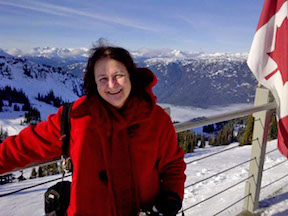George Catlin, from “Letters and Notes on the Manners, Customs and Conditions of the North American Indians. . . ”
- What are some features of Catlin’s descriptions of the buffaloes? Which of their habits does he describe, and what seems to be his opinion of them?
- According to Catlin, what are reasons for the buffalo’s imminent disappearance? What does he think of these changes?
- How does his prose reveal his attitudes and opinions of this topic?
- Which scenes are especially striking? In the dramatic scene of the old buffalo’s death, who is the attacker?
- What is the effect of his final vision of the slaughter and death of the buffalo? (143) Is his use of reverie in this scene effective?
Ralph Waldo Emerson, Nature, 1835
- Do you think Emerson has been reading Wordsworth? What are some similarities? What are some differences? Do you think he is a “deep ecologist”? A “social ecologist”?
- What are some features of Emerson’s style? What kinds of metaphors does he use? How would you compare his style with that of Ruskin?
- What does Emerson oppose to tradition? What metaphors does he use to describe future possibilities? ("There is more wool and flax in the fields," 145)
- On what basis does he assume that our questions can be answered? ("we must trust the perfection of the creation") Would you call him a philosophical optimist?
- What should be the nature of our religion? (a religion of direct revelation to us) Would this apply to the Christianity Emerson had formerly practiced? What orthodox 19th century Christian doctrines are absent from his account of nature? (sense of sin, blight, fall)
- What are some of his definitions of “nature”? From what is it differentiated? (146, seems both exterior and within human mind) How can one reconcile these interpretations? (we are all part of universal mind and experience kinship with other parts)
- According to Emerson, how do we perceive? (like a transparent eyeball, 147)
- How is landscape different from land and conceptions of ownership? What is the relation between “nature” and traditional conceptions of divinity, according to Emerson?
- What is the importance of the perceptions of children? (147)
- What features does he ascribe to nature? What scenes create an especial sense of solitude? Which parts of nature cheer the viewer, and why?
- Why do you think he is attracted to “the distant line of the horizon”?
- What is “the “occult relation between man and the vegetable”? Is nature a “higher power,” or a reflection of ourselves, or both? Does Emerson believe that humans project their own emotions onto nature? (148)
- Do you believe all of Emerson's ideas about nature are consistent, and if not, is this important?
- What is the relationship between Emerson's views as here expressed and what is called "naturalism" in fiction?
- Why do you think Emerson's works were so admired in Britain?
Journals
What emotions does he experience in looking at a collection of natural objects and animals? (overwhelmed by their beauty and variety) What creatures does he describe lovingly? (birds and frogs)
What types of experiences are celebrated in his journals? (common ones, everyday, 153)
What times of day does he especially like? (nighttime, 153) Why may this be?
